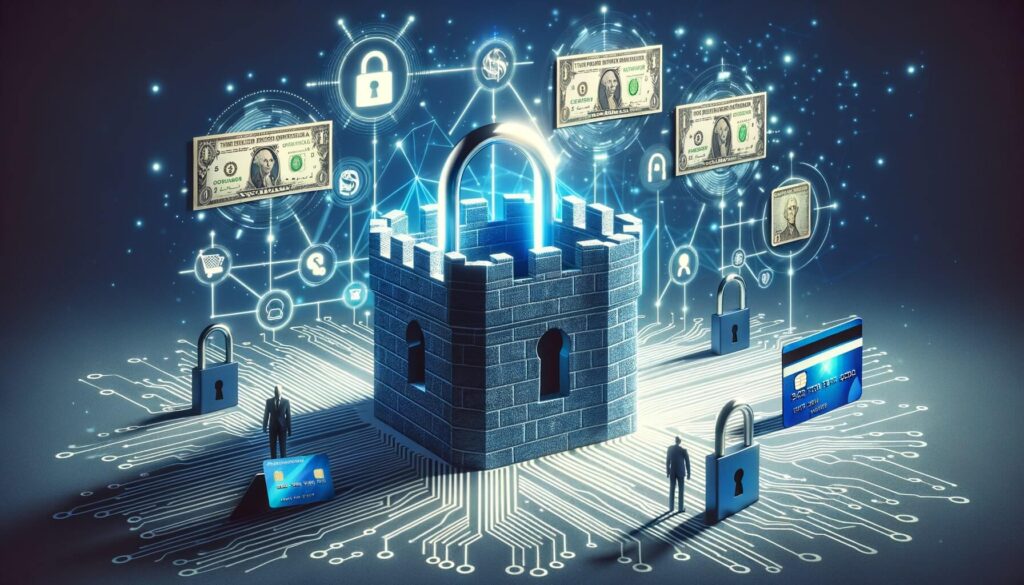
By Catharine Proctor April 2, 2025
In today’s digital age, secure payment processing systems have become an essential component of any business that accepts electronic payments. These systems provide a secure and efficient way to process transactions, ensuring that sensitive customer information is protected from potential threats.
In this article, we will explore everything you need to know about secure payment processing systems, including their importance, key features, different types, fraud protection mechanisms, choosing the right system for your business, implementation and integration, best practices, and common FAQs.
Understanding the Importance of Secure Payment Processing

Secure payment processing is crucial for businesses as it helps protect both the company and its customers from potential fraud and data breaches. With the rise in cybercrime and identity theft, businesses must prioritize the security of their payment processing systems to maintain customer trust and avoid financial losses.
By implementing secure payment processing systems, businesses can ensure that customer data, including credit card information, is encrypted and transmitted securely, reducing the risk of unauthorized access.
Key Features and Components of Secure Payment Processing Systems

Secure payment processing systems consist of several key features and components that work together to ensure the security and efficiency of transactions. These include encryption, tokenization, secure sockets layer (SSL) certificates, payment gateways, and fraud detection tools.
Encryption is a fundamental feature of secure payment processing systems. It involves converting sensitive data, such as credit card numbers, into an unreadable format using complex algorithms. This ensures that even if the data is intercepted, it cannot be deciphered without the encryption key.
Tokenization is another important component of secure payment processing systems. It involves replacing sensitive data with unique tokens that have no intrinsic value. These tokens are used for transaction processing, while the actual data is securely stored in a separate system. This reduces the risk of data exposure in case of a breach.
SSL certificates are essential for establishing a secure connection between the customer’s browser and the payment processor. They encrypt the data transmitted during the transaction, preventing unauthorized access or tampering.
Payment gateways act as intermediaries between the merchant’s website and the payment processor. They securely transmit transaction data, handle authorization requests, and facilitate the transfer of funds between the customer’s bank and the merchant’s account.
Fraud detection tools are crucial for identifying and preventing fraudulent transactions. These tools use advanced algorithms and machine learning techniques to analyze transaction patterns, detect anomalies, and flag suspicious activities. They help businesses minimize the risk of chargebacks and financial losses due to fraudulent transactions.
Different Types of Secure Payment Processing Systems

There are various types of secure payment processing systems available, each catering to different business needs and requirements. The most common types include traditional point-of-sale (POS) systems, mobile payment solutions, online payment gateways, and virtual terminals.
Traditional POS systems are commonly used in brick-and-mortar stores. They consist of hardware devices, such as cash registers or card readers, that are connected to a payment processor. These systems allow businesses to accept payments in person, either through credit or debit cards, cash, or checks.
Mobile payment solutions have gained popularity in recent years, thanks to the widespread use of smartphones. These systems enable businesses to accept payments using mobile devices, such as smartphones or tablets, with the help of dedicated apps or card readers. Mobile payment solutions offer convenience and flexibility, allowing businesses to accept payments on the go.
Online payment gateways are essential for businesses that operate online stores or e-commerce platforms. These gateways securely process online transactions, allowing customers to make purchases using credit or debit cards. Online payment gateways often integrate with popular e-commerce platforms, providing a seamless payment experience for customers.
Virtual terminals are primarily used for card-not-present transactions, such as phone or mail orders. They allow businesses to manually enter customer payment information into a secure web-based interface, which is then processed by the payment gateway. Virtual terminals are commonly used by businesses that offer services or products over the phone or through mail order catalogs.
How Secure Payment Processing Systems Protect Against Fraud

Secure payment processing systems employ various mechanisms to protect against fraud and unauthorized access. These mechanisms include encryption, tokenization, two-factor authentication, address verification systems (AVS), and card verification codes (CVC).
Encryption ensures that sensitive data, such as credit card numbers, is transmitted securely between the customer’s browser and the payment processor. By encrypting the data, it becomes unreadable to anyone who intercepts it, reducing the risk of unauthorized access.
Tokenization replaces sensitive data with unique tokens that have no intrinsic value. This ensures that even if the token is intercepted, it cannot be used to retrieve the original data. Tokenization adds an extra layer of security, as the actual data is securely stored in a separate system.
Two-factor authentication adds an additional layer of security by requiring users to provide two forms of identification before accessing their accounts. This typically involves a combination of something the user knows (such as a password) and something the user has (such as a unique code sent to their mobile device).
Address verification systems (AVS) compare the billing address provided by the customer during the transaction with the address on file with the credit card issuer. This helps businesses verify the authenticity of the transaction and reduce the risk of fraudulent activities.
Card verification codes (CVC), also known as CVV or CVV2, are three or four-digit codes printed on the back of credit or debit cards. These codes provide an additional layer of security by verifying that the customer has physical possession of the card during the transaction.
Choosing the Right Secure Payment Processing System for Your Business
When choosing a secure payment processing system for your business, several factors need to be considered. These include the type of business, transaction volume, integration capabilities, security features, cost, and customer support.
The type of business plays a significant role in determining the most suitable payment processing system. Brick-and-mortar stores may require traditional POS systems, while online businesses may opt for online payment gateways or virtual terminals. Mobile businesses, on the other hand, may prefer mobile payment solutions.
Transaction volume is another crucial factor to consider. High-volume businesses may require payment processing systems that can handle a large number of transactions simultaneously without compromising performance or security.
Integration capabilities are essential for businesses that use other software or platforms, such as e-commerce platforms or accounting software. It is important to choose a payment processing system that seamlessly integrates with existing systems to ensure a smooth and efficient payment process.
Security features should be a top priority when selecting a payment processing system. Look for systems that offer encryption, tokenization, SSL certificates, and fraud detection tools to ensure the highest level of security for your customers’ data.
Cost is another important consideration. Payment processing systems typically charge fees for each transaction or a monthly fee based on transaction volume. It is important to compare pricing structures and choose a system that aligns with your budget and business needs.
Customer support is crucial, especially when dealing with sensitive customer data and potential technical issues. Look for payment processing providers that offer 24/7 customer support and have a reputation for providing prompt and reliable assistance.
Implementing and Integrating Secure Payment Processing Systems
Implementing and integrating secure payment processing systems requires careful planning and execution to ensure a smooth transition and minimize disruptions to business operations. The following steps can help guide the implementation process:
1. Assess your business needs: Identify the specific requirements of your business, including the type of payment processing system needed, integration capabilities, and security features.
2. Research and select a payment processing provider: Conduct thorough research to identify reputable payment processing providers that meet your business needs. Consider factors such as security features, pricing, customer support, and integration capabilities.
3. Set up a merchant account: To accept electronic payments, you will need to set up a merchant account with a payment processor. This account will enable you to receive funds from customer transactions.
4. Integrate the payment processing system: Depending on your business setup, you may need to integrate the payment processing system with your website, point-of-sale system, or other software. Follow the integration instructions provided by the payment processing provider or seek assistance from their technical support team.
5. Test the system: Before going live, thoroughly test the payment processing system to ensure that it functions correctly and securely. Test various transaction scenarios, including successful transactions, declined transactions, and refunds, to ensure that all processes are working as expected.
6. Train your staff: Provide training to your staff on how to use the payment processing system effectively and securely. This includes understanding the features and functionalities of the system, as well as how to handle potential issues or errors.
7. Monitor and maintain the system: Regularly monitor the performance and security of your payment processing system. Stay updated with any software updates or security patches provided by the payment processing provider to ensure that your system remains secure and up to date.
Best Practices for Secure Payment Processing
To ensure the highest level of security for your payment processing system, it is important to follow best practices. These practices include:
1. Use strong passwords: Implement strong password policies for all accounts associated with your payment processing system. Use a combination of uppercase and lowercase letters, numbers, and special characters. Avoid using easily guessable passwords or reusing passwords across multiple accounts.
2. Regularly update software: Keep your payment processing system and associated software up to date with the latest security patches and updates. Regularly check for updates provided by the payment processing provider and promptly install them to address any vulnerabilities.
3. Educate employees: Train your employees on best practices for secure payment processing, including how to identify and report potential security threats or suspicious activities. Regularly remind them about the importance of data security and the potential consequences of negligence.
4. Implement multi-factor authentication: Enable multi-factor authentication for all accounts associated with your payment processing system. This adds an extra layer of security by requiring users to provide additional verification, such as a unique code sent to their mobile device, in addition to their password.
5. Regularly monitor transactions: Monitor transactions regularly to identify any suspicious activities or anomalies. Implement real-time transaction monitoring tools that can detect and flag potentially fraudulent transactions, allowing you to take immediate action.
6. Secure your network: Ensure that your network is secure by implementing firewalls, intrusion detection systems, and other security measures. Regularly scan your network for vulnerabilities and promptly address any identified issues.
7. Regularly backup data: Regularly backup all data associated with your payment processing system, including transaction records and customer information. Store backups in secure locations to ensure that data can be recovered in case of a system failure or data breach.
Common FAQs about Secure Payment Processing Systems
Q1: What is a secure payment processing system?
A1: A secure payment processing system is a software or hardware solution that enables businesses to securely process electronic payments. These systems employ various security features, such as encryption, tokenization, and fraud detection tools, to protect sensitive customer data and prevent unauthorized access.
Q2: How does encryption work in secure payment processing systems?
A2: Encryption involves converting sensitive data, such as credit card numbers, into an unreadable format using complex algorithms. This ensures that even if the data is intercepted, it cannot be deciphered without the encryption key. Encryption adds an extra layer of security to the payment process, reducing the risk of data exposure.
Q3: What is tokenization in secure payment processing systems?
A3: Tokenization is a process that replaces sensitive data, such as credit card numbers, with unique tokens that have no intrinsic value. These tokens are used for transaction processing, while the actual data is securely stored in a separate system. Tokenization reduces the risk of data exposure in case of a breach, as the tokens cannot be used to retrieve the original data.
Q4: How do secure payment processing systems protect against fraud?
A4: Secure payment processing systems employ various mechanisms to protect against fraud, including encryption, tokenization, two-factor authentication, address verification systems (AVS), and card verification codes (CVC). These mechanisms help verify the authenticity of transactions, detect anomalies, and prevent unauthorized access.
Q5: How do I choose the right secure payment processing system for my business?
A5: When choosing a secure payment processing system, consider factors such as the type of business, transaction volume, integration capabilities, security features, cost, and customer support. Assess your specific business needs and research reputable payment processing providers that align with those needs.
Q6: How do I implement and integrate a secure payment processing system?
A6: Implementing and integrating a secure payment processing system requires careful planning and execution. Assess your business needs, research and select a payment processing provider, set up a merchant account, integrate the system with your existing software or platforms, test the system, train your staff, and regularly monitor and maintain the system.
Conclusion
Secure payment processing systems play a vital role in protecting businesses and customers from potential fraud and data breaches.
By implementing these systems, businesses can ensure the security and integrity of electronic transactions, maintaining customer trust and minimizing financial risks. Understanding the importance of secure payment processing, key features and components, different types of systems, fraud protection mechanisms, and best practices is essential for businesses to make informed decisions and safeguard their payment processes.
By following best practices and choosing the right system for their specific needs, businesses can establish a secure and efficient payment processing environment, enhancing customer satisfaction and business growth.